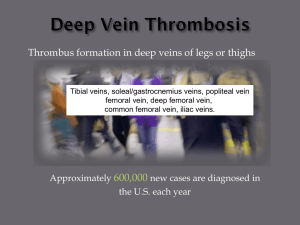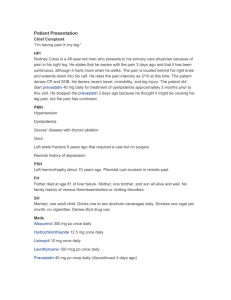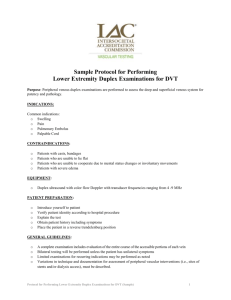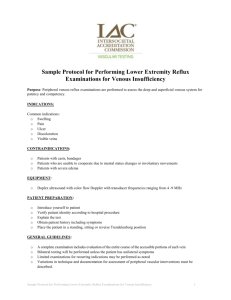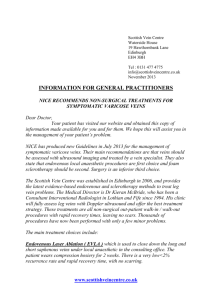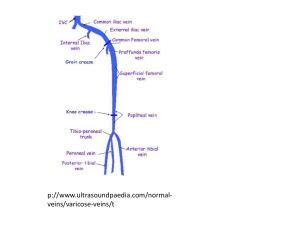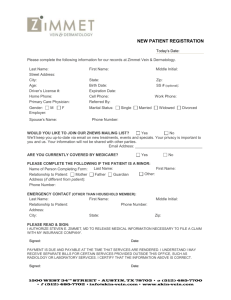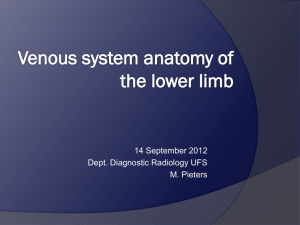Applied Anatomy of Arteries & Veins of Limbs
advertisement
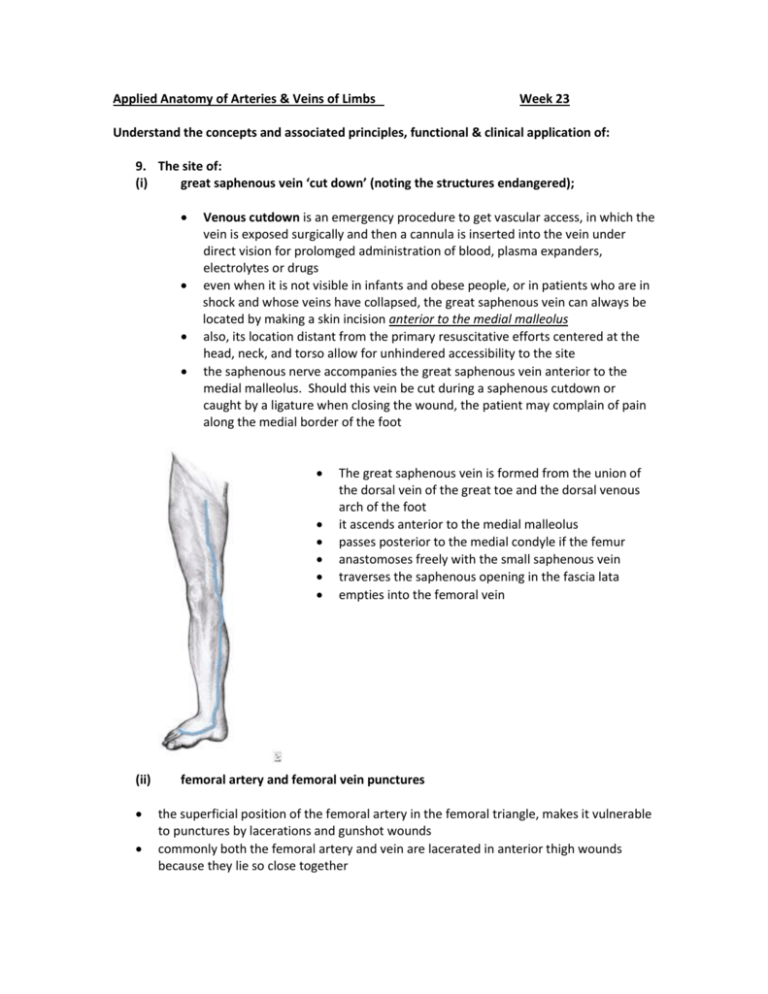
Applied Anatomy of Arteries & Veins of Limbs Week 23 Understand the concepts and associated principles, functional & clinical application of: 9. The site of: (i) great saphenous vein ‘cut down’ (noting the structures endangered); Venous cutdown is an emergency procedure to get vascular access, in which the vein is exposed surgically and then a cannula is inserted into the vein under direct vision for prolomged administration of blood, plasma expanders, electrolytes or drugs even when it is not visible in infants and obese people, or in patients who are in shock and whose veins have collapsed, the great saphenous vein can always be located by making a skin incision anterior to the medial malleolus also, its location distant from the primary resuscitative efforts centered at the head, neck, and torso allow for unhindered accessibility to the site the saphenous nerve accompanies the great saphenous vein anterior to the medial malleolus. Should this vein be cut during a saphenous cutdown or caught by a ligature when closing the wound, the patient may complain of pain along the medial border of the foot (ii) The great saphenous vein is formed from the union of the dorsal vein of the great toe and the dorsal venous arch of the foot it ascends anterior to the medial malleolus passes posterior to the medial condyle if the femur anastomoses freely with the small saphenous vein traverses the saphenous opening in the fascia lata empties into the femoral vein femoral artery and femoral vein punctures the superficial position of the femoral artery in the femoral triangle, makes it vulnerable to punctures by lacerations and gunshot wounds commonly both the femoral artery and vein are lacerated in anterior thigh wounds because they lie so close together in some cases an arteriovenous shunt occurs as a result of communication between the two vessels when it is necessary to ligate the femoral artery, the cruciate anastomosis supplies blood to the lower limb cruciate anastomosis -formed between the medial and lateral circumflex femoral arteries with the inferior gluteal artery superiorly and tnhe 1st perforating artery inferiorly) 10. The sites, diagnosis and effects of: (i) varicose veins (noting the significance of incompetence of the valves of the perforating veins) (ii) a varicose vein (or varix) is an abnormal dilatation of a vein which may also become elongated and tortuous tend to become more prominent with prolonged elevation of venous pressure structural damage to valve cusps (e.g. from venous thrombosis) may result in venous valve incompetence the valves fail to close allowing blood flow in the opposite direction incompetent valves of perforating veins in the leg are particularly significant as the muscular venous pump shunts blood back under pressure from deep veins (surrounded by the calf muscles) to superficial veins (not surrounded by muscles) where the blood pools dilatation of a vein at the site of a valve may also result in impairment of valve function with the potential for a domino effect along the vein occurs especially in long veins subject to high hydrostatic pressure (e.g. in the leg) varicose veins may therefore be both the cause and the effect of valve incompetence deep vein thrombosis thrombus = blood clot on vascular system of living person deep veins of the calf are predisposed to thrombosis if surrounding muscles are not contracting regularly stasis and pooling of blood in soleal venous sinuses occurs if not emptied regularly by contraction of the calf muscles a thrombus in a deep calf vein (especially one that propagates proximally), may dislodge (or part of it may break off) to become a thromboembolus pulmonary embolism is a potential consequence of a DVT originating in the calf and is life-threatening thromboemboli are carried via the IVC and right side of the heart to the pulmonary arterial system one or more arteries subsequently become occluded as they become successively narrower by branching thromboemboli are more common in veins that arteries due to the more sluggish flow 11. How an infection of a toe may produce a painful swelling in the groin the lower limb has superficial and deep lymphatic vessels the superficial accompany the saphenous veins and their tributaries the lymphatics accompanying the great saphenous vein (remember part of this vein originates in the big toe) end in the superficial inguinal lymph nodes lymph nodes enlarge when diseased and pathogenic micro-organisms or their toxins in the blood or other tissues, may produce slight enlargement of the superficial inguinal lymph nodes because these nodes are in the subcutaneous tissue they are easy to palpate in normal people an infection in the big toe could therefore travel up the superficial lymphatics until it reached the superficial inguinal nodes and cause a swelling there 12. The structures involved in the differential diagnosis of a ‘lump’ in the femoral triangle femoral hernia enlarged lymph nodes


